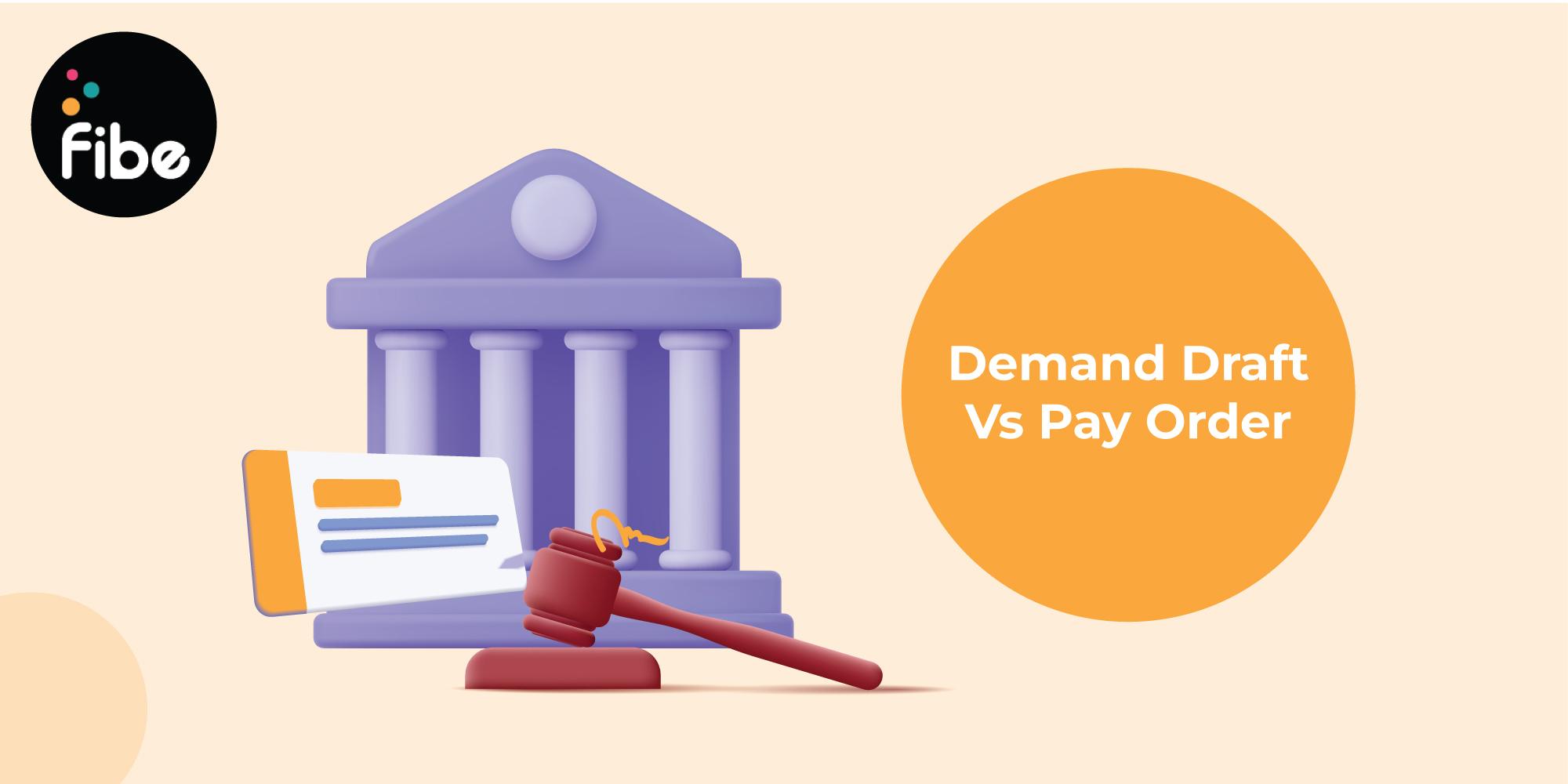
Choosing a pay order vs demand draft depends on your payment requirements and several other factors. While these banking instruments serve the same purpose, they differ in their key features. This includes clearance time, amount, acceptability and more.
Although their use has reduced over the years, several merchants and individuals still rely on them. As such, knowing the difference between a pay order and a demand draft can help you choose the right option when needed.
Read on to know their differences, features and more.
Also called a banker’s cheque, it allows payment to an unknown third party. It is a payment instrument issued by the bank on your behalf. Using this, you can make secure and cashless payments without the banking details of the beneficiary.
To generate it, you have to give the required amount in cash or cheque to the banking executive. Upon deposit, the same amount will get remitted into the beneficiary’s account. Now that you know the meaning of pay order, here are some other features:
DD is a negotiable instrument that the bank issues at your request. This allows you to make payments without the risk of cheque bounce or dishonour.
Similar to the pay order, it requires you to pay beforehand to make payments to third-party beneficiaries without their banking details. However, unlike a pay order, it allows you to make payments in any bank branch, even outside the city. Here’s an overview of key features of demand drafts.
Also Read: What is a demand draft in banking?
Here is an overview of the difference between a pay order and a demand draft.
| Particulars | Pay Order | Demand Draft |
|---|---|---|
| Negotiable | It is a non-negotiable instrument | It is a negotiable instrument |
| Clearance | Encashment can be at any branch of the bank within the city | Encashment can be done at any bank branch within or beyond city |
Knowing the features of pay order vs demand draft, you can easily choose the most convenient fund transfer option. However, if you do not have sufficient funds in your account, apply for a Fibe Instant Personal Loan to maintain the balance for clearing your payment.
You can avail of up to ₹5 lakhs in a matter of minutes and at an attractive interest rate. In addition, you can enjoy a host of benefits, such as a complete digital application, minimum documents and no pre-closure charges. Download the Personal Loan App or go to our website to get started!
A pay order is a non-negotiable financial instrument that allows payments within the same city. This is a secure method acknowledged by the bank, which gives a guarantee of payment to the receiver.
Pay orders are generally cleared within 24 hours of deposit but can remain valid for up to 3 months after issuance.
No, once issued by the bank, there is no option to cancel a pay order.
A pay order is a type of cheque that the banking executive drafts, while account holders can write a cheque themselves.
No, PO is useful to transfer funds within the same city, but DD is valid across India. One thing that both have in common is that you have to request the bank to issue it.
Yes, it’s a secure method of payment transfer as it is issued by the bank.